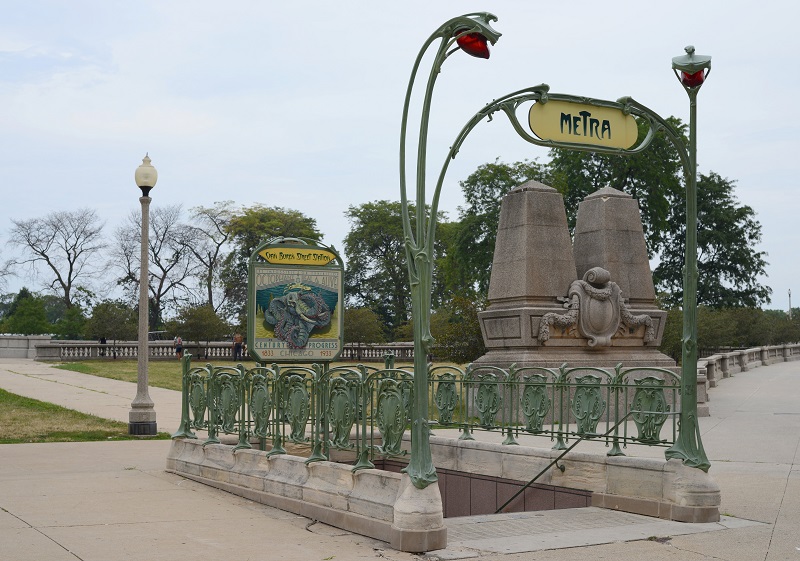Art Nouveau
Art Nouveau was a movement that emerged towards the end of the 19th century. It had a significant influence on the decorative arts and architecture but was relatively short-lived and fell out of favour in the 1920s with the arrival of Art Deco.
Art Nouveau was symptomatic of the struggle between the old and the new. Whilst it rejected some of the revivalist styles of the 19th century, it did adopt some of the elements of Rococo, with organic forms and applied art typified by Hector Guimard's Paris metro entrances.
The central aim of Art Nouveau was to escape the eclectic historical styles that had come to dominate the late-19th century and so modernise design. Inspiration was drawn from both organic and geometric forms, merging flowing, natural designs with more angular and rigid contours.
The movement adopted the ethos ‘form follows function’; however, as the style progressed designers began to incorporate more lavish decorations which led to criticisms that a tendency towards the elaborate was in conflict with its original ideology.
Art Nouveau had significant influence on graphic and visual arts and was a major source of inspiration for architecture in European cities such as Paris, Prague, Vienna, and Budapest. Prime examples include the Museum of Applied Arts in Budapest, and the Secession Building in Vienna, both of which demonstrate the style’s decorative and symmetric aesthetic. Also of note is the Grand Palais in Paris, which although predominantly Beaux Arts, drew from the Art Nouveau decorative style for the design of its interior glass dome.
Notable exponents of Art Nouveau in architecture include the American architect Louis Henry Sullivan, who used decorative plant-like ironmongery on traditionally structured buildings, and the Spanish architect Antonio Gaudi, who developed a highly-distinctive style to create curving, bulbous, and organic forms.
[edit] Related articles on Designing Buildings Wiki
- Aesthetic movement.
- Architectural styles.
- Art Deco.
- Art Moderne.
- Arts and craft movement
- Baroque architecture.
- Bauhaus.
- Beaux Arts style.
- Constructivist architecture.
- Deconstructivism.
- Edwardian architecture.
- High-tech architecture.
- Rococo.
[edit] External articles
- The Art Story - Art Nouveau
Featured articles and news
Amendment to the GB Energy Bill welcomed by ECA
Move prevents nationally-owned energy company from investing in solar panels produced by modern slavery.
Gregor Harvie argues that AI is state-sanctioned theft of IP.
Heat pumps, vehicle chargers and heating appliances must be sold with smart functionality.
Experimental AI housing target help for councils
Experimental AI could help councils meet housing targets by digitising records.
New-style degrees set for reformed ARB accreditation
Following the ARB Tomorrow's Architects competency outcomes for Architects.
BSRIA Occupant Wellbeing survey BOW
Occupant satisfaction and wellbeing tool inc. physical environment, indoor facilities, functionality and accessibility.
Preserving, waterproofing and decorating buildings.
Many resources for visitors aswell as new features for members.
Using technology to empower communities
The Community data platform; capturing the DNA of a place and fostering participation, for better design.
Heat pump and wind turbine sound calculations for PDRs
MCS publish updated sound calculation standards for permitted development installations.
Homes England creates largest housing-led site in the North
Successful, 34 hectare land acquisition with the residential allocation now completed.
Scottish apprenticeship training proposals
General support although better accountability and transparency is sought.
The history of building regulations
A story of belated action in response to crisis.
Moisture, fire safety and emerging trends in living walls
How wet is your wall?
Current policy explained and newly published consultation by the UK and Welsh Governments.
British architecture 1919–39. Book review.
Conservation of listed prefabs in Moseley.
Energy industry calls for urgent reform.


























